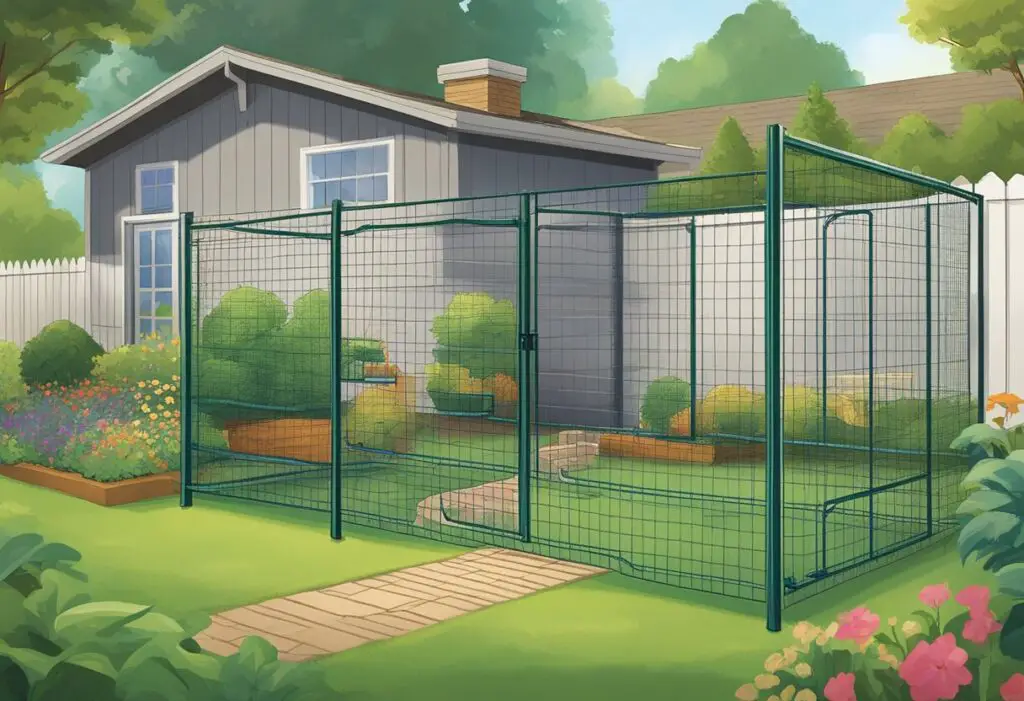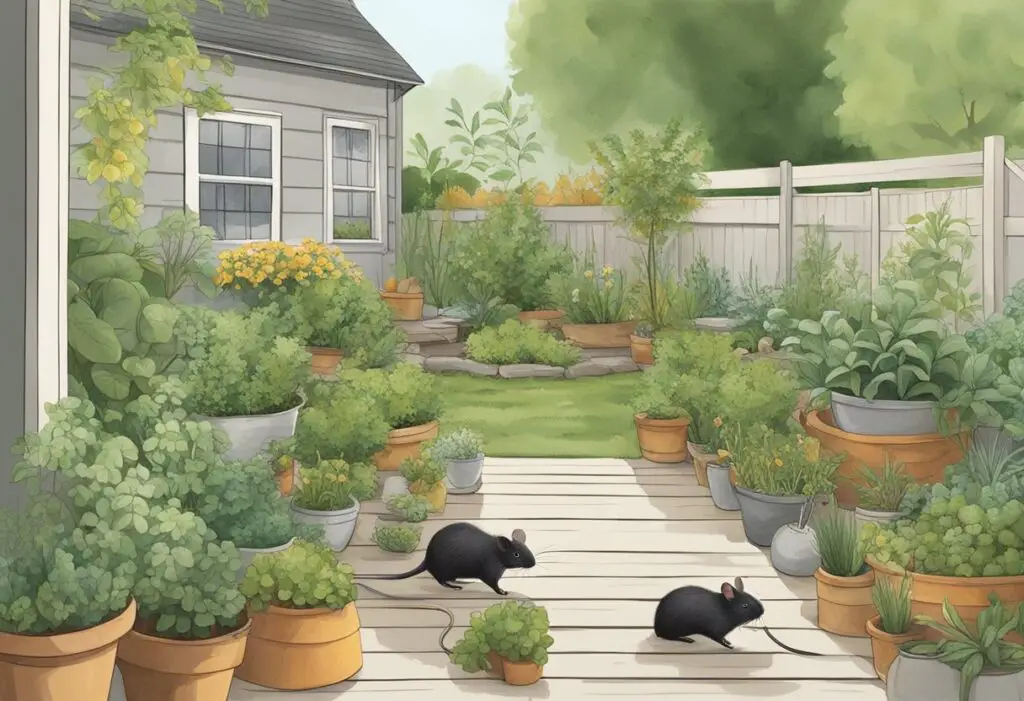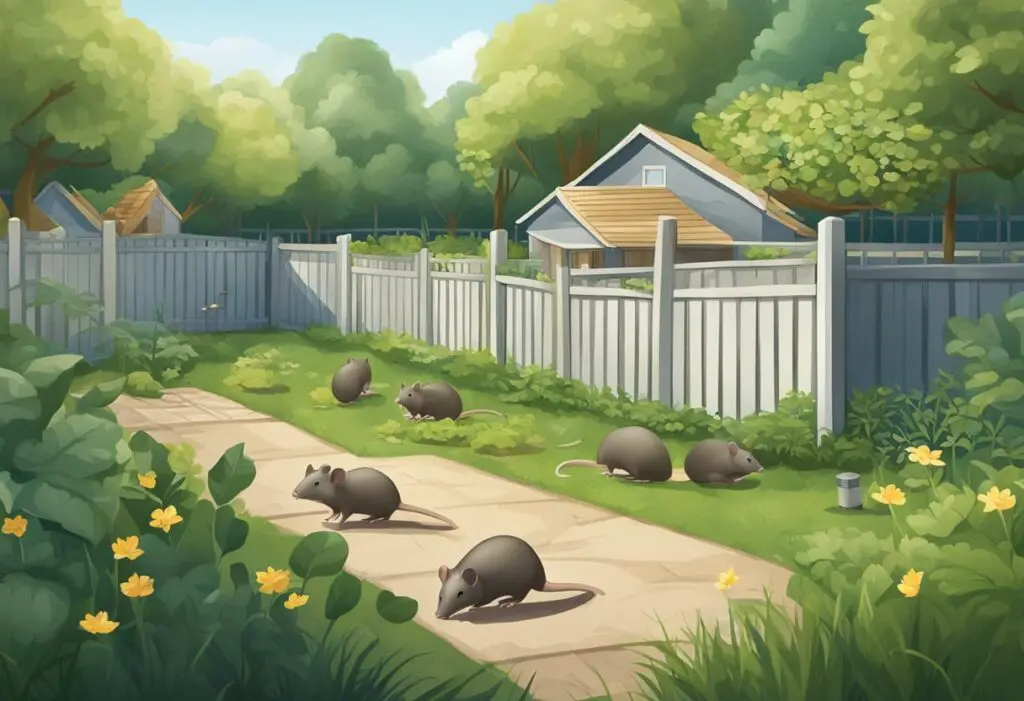Dealing with mice in your backyard can be a frustrating ordeal, but there are effective strategies to keep these unwanted guests at bay. Keeping your yard free of clutter and eliminating water sources is essential to make it less inviting for mice. Removing piles of wood, fallen leaves, and tall grass can significantly reduce their hiding spots.

Another way to deter mice is by addressing food sources in your yard. Mice are omnivorous and will eat almost anything, but they particularly enjoy cereals, grains, and seeds. Ensuring you don’t leave any food out can help keep them away. Even simple measures like cleaning up your barbecue grill and storing pet food securely can make a big difference.
For a natural repellent, consider using substances that mice find irritating. Sprinkling cayenne pepper around garden beds or using a vinegar spray on the yard’s perimeter can be effective. By incorporating these methods, you’ll create an environment that mice will want to avoid.
Understanding Mice and Their Behavior

Mice are small but persistent pests that find their way into backyards by exploiting any available resources. By learning how to identify signs of their presence, understanding their habitats and life cycles, and recognizing the risks they pose, you can better manage and prevent infestations.
Identifying Signs of Mice
Mice often leave droppings around food sources or nesting areas, which are among the first signs you’ll notice. These droppings are small, dark, and rice-shaped.
You might also spot gnaw marks on objects and packaging, as mice have a constant need to chew to keep their teeth filed down. Additionally, greasy marks along walls or surfaces indicate their frequent travel paths.
Other indicators include:
- Urine trails visible under UV light
- Tracks in dusty areas
- Nests made from shredded paper, fabric, and other materials
Recognizing these signs early can prevent a minor issue from becoming a full-blown infestation.
Mice Habitats and Life Cycle
Mice prefer dark, secluded areas where they can nest undisturbed. They often build nests in hidden corners, under decks, or in dense vegetation. Their nests provide warmth and safety, typically constructed from materials they find within your yard.
A female mouse can breed year-round, producing several litters annually. Each litter can contain 3-14 pups, and these pups mature quickly, often within a month. This rapid reproduction cycle makes timely intervention crucial.
Preferred habitats include:
- Dense shrubs and grass
- Piles of leaves or debris
- Unattended compost heaps
By eliminating these habitats, you can significantly reduce the risk of mice establishing themselves in your backyard.
The Risks Associated With Mice Infestations
Mice are more than just a nuisance; they carry diseases that can threaten your health. They spread illnesses through their droppings, urine, and saliva. Some common diseases transmitted by mice include hantavirus, leptospirosis, and salmonella.
Their constant gnawing can damage property and create fire hazards by chewing on electrical wires. Mice have a keen sense of smell, enabling them to locate food sources easily, which can lead to contamination of stored food and surfaces.
Health and safety risks include:
- Disease transmission
- Allergic reactions to droppings and urine
- Fire hazards from gnawed wires
Addressing a mouse problem promptly can protect both your health and property.
Preventive Measures for a Mouse-Free Yard
Creating a mouse-free yard involves strategic landscaping, maintaining cleanliness, and proper storage of food and waste. By eliminating potential hiding spots and food sources, you can keep mice at bay.
Landscaping to Deter Mice
Certain plants emit scents that naturally repel mice. Mint, lavender, daffodils, and marigolds are great choices to include in your garden. These plants not only help deter mice but also enhance the aesthetic appeal of your yard.
Regularly trimming your lawn and removing shrubbery can reduce cover for mice. Keep woodpiles elevated and away from the house. Raised garden beds and gravel paths can also make your yard less attractive to rodents.
Tables and shelters can provide hiding spots. Ensure they are minimal and positioned away from your house. This makes your backyard less inviting for pests.
Importance of Cleanliness in Outdoor Spaces
Keeping your yard clean is crucial. Clear away fallen leaves, branches, and other debris regularly. These can provide hiding and nesting spots for mice.
Handle pet food with care. Avoid leaving it outside, as it attracts mice easily. Bird feeders can also be a problem; ensure you clean up any spilled seeds promptly.
Refuse management is key. Use sealed trash bins and avoid overfilling them. Regularly remove garden waste and consider composting responsibly to avoid attracting mice.
Proper Food Storage and Waste Management
Never leave food scraps or leftovers outside. This is a strong attractant for mice. Store pet food in airtight containers and keep them indoors when not in use.
For bird feeders, place them in areas that are harder for mice to access and regularly clean up feed spillage. Always store yard tools and supplies in an organized manner to avoid creating nesting opportunities.
Compost bins should be well-covered and maintained to prevent access to food scraps. Efficient waste management greatly reduces the risk of attracting unwanted rodents to your yard.
By following these preventive measures, you can create a less hospitable environment for mice in your backyard, ensuring a cleaner and more enjoyable outdoor space.
Physical Barriers and Exclusion Techniques
To keep mice out of your backyard, implementing effective barriers and exclusion techniques is crucial. These methods focus on sealing access points and creating physical deterrents to prevent mice from entering your space.
Sealing Entry Points and Gaps
Closing gaps and holes in structures around your yard is essential in keeping mice out. Begin by inspecting your garden shed, fences, and the exterior of your home for any openings. Mice can squeeze through tiny spaces as small as a quarter of an inch.
Use materials such as concrete and caulk to fill in cracks. Applying a combination of caulk and steel wool to seal holes can be particularly effective since mice avoid chewing through steel wool. Wire mesh or hardware cloth is another excellent choice for covering larger openings or air vents, as these materials are durable and hard for mice to penetrate.
Be thorough in your inspection, including less obvious places like around utility conduits, under decks, and along rooflines. Regular maintenance and repair of these areas will significantly reduce the chances of mice finding a way into your yard.
Fencing and Protective Materials
Installing sturdy fencing is another effective strategy for keeping mice out. Opt for materials like hardware cloth or wire mesh with a mesh size no larger than a quarter of an inch to prevent mice from squeezing through.
Set up a barrier by burying the bottom part of the fence at least 6 inches underground. This prevents mice from digging underneath. Fencing can also be used around hotspots like compost piles or gardens to create a physical barrier against rodent entry.
Consider using metal flashing along the bottom edges of wooden structures or raised beds to deter chewing. Regularly check and repair any damaged sections to maintain the integrity of your defenses. By combining these fencing techniques with vigilant upkeep, you can create a backyard environment that is much less attractive to mice.
Natural and Homemade Repellents

Using natural and homemade repellents can be an effective way to keep mice out of your backyard. These methods often involve using plants and DIY solutions that are easily accessible and safe for the environment.
Using Plants and Herbs as Mice Deterrents
Plants and herbs can serve as excellent natural mouse repellents. Mint is particularly effective because mice dislike its strong scent. Planting mint around your yard can help deter mice. Similarly, you can use lavender and cloves, which are also known to repel mice due to their strong aromas.
Peppermint oil can be another strong deterrent. Soak cotton balls in peppermint oil and place them around potential entry points and areas frequented by mice. This not only keeps them away but also leaves a pleasant smell in your yard.
Using these plants and herbs not only helps in keeping mice at bay but also adds to the aesthetic value of your garden. They are easy to maintain and can be strategically placed around your yard for maximum effectiveness.
DIY Repellents and Their Effectiveness
DIY repellents can be a quick and budget-friendly solution to your mouse problem. Cayenne pepper is one such repellent. Its spicy nature irritates mice, making them less likely to invade areas where it is sprinkled. You can create a spray by mixing cayenne pepper with water and spraying it around your backyard.
Another effective DIY solution involves white vinegar. The strong odor of vinegar can deter mice. Mix vinegar with water and use it to wipe down surfaces and potential entry points.
Ultrasonic devices are also considered a safe method for deterring mice. These devices emit high-frequency sounds that are unpleasant to mice but inaudible to humans and pets.
These homemade repellents provide a safe and natural way to protect your backyard from mice without the need for harmful chemicals. They are easy to prepare and can be implemented quickly, making them a convenient option for many households.
Choosing and Utilizing Traps and Bait

Effectively managing a mouse problem in your backyard involves selecting the right types of traps and baits. You’ll need to understand different trap options, suitable bait selections, and ethical considerations for humane removal.
Types of Traps for Mice Control
There are various traps available for controlling mice. Snap traps are one of the most common and effective types. These traps are designed to kill mice quickly.
Glue traps are another option, though they may cause distress to the trapped mice. Catch-and-release traps, on the other hand, capture mice alive, allowing you to relocate them.
When selecting a trap, choose one based on your ethical preferences and the severity of your mouse issue.
Bait Options and Strategies
Choosing the right bait is crucial for trapping mice effectively. Common baits include peanut butter, cheese, and seeds. Peanut butter is particularly effective due to its strong scent and stickiness.
Place the bait strategically within the trap to ensure the mouse has to engage with it. Consistent baiting near mouse activity areas can improve your chances of success.
Ensure you also remove potential food sources from your yard to avoid attracting more mice.
Humane Removal and Ethical Considerations
For those who prefer a more ethical approach, humane traps are ideal. These traps allow you to capture and release mice without causing harm. Examples include the Motel Mouse Humane Mouse Trap.
After capturing a mouse, release it at a safe distance from your home. Regularly check these traps to minimize the stress on trapped mice. Ethical considerations also extend to avoiding the use of mouse poison, as it can harm other wildlife and pets.








